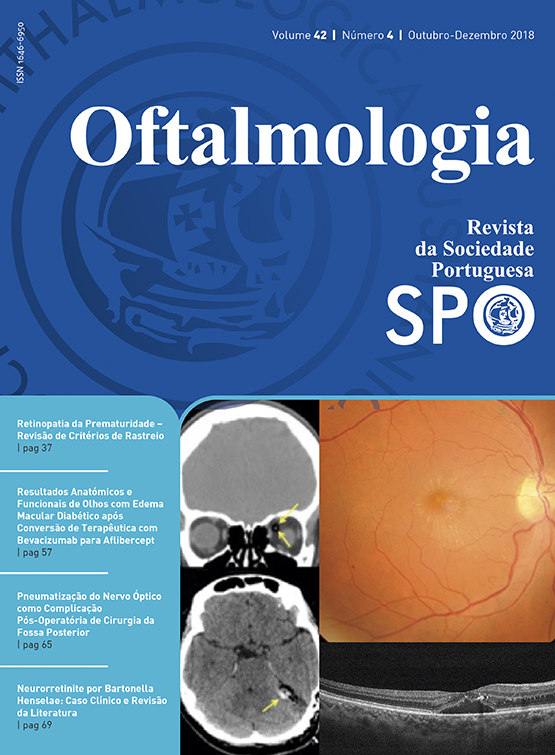TOMOGRAPHIC AND ANGIOGRAPHIC FEATURES OF DIABETIC RETINAL MICROANEURYSMS: A SIMULTANEOUS STUDY REPORT
DOI:
https://doi.org/10.48560/rspo.13684Keywords:
Microaneurysms, Diabetic Retinopathy, Cystoid Spaces, Macular Edema, Optical Coherence Tomography, SD-OCT, Fluorescein Angiography, Angiographic LeakageAbstract
PURPOSE - To correlate the morphological characteristics of diabetic retinal microaneurysms on spectral domain optical coherence tomography (SD-OCT) with their functional leakage status on fluorescein angiography (FA) in a simultaneous assessment..
METHODS – In this retrospective observational study, 88 retinal microaneurysms in 11 eyes of 6 type 2 diabetic adult patients with diabetic retinopathy (DR) (8 moderate non proliferative DR and 3 proliferative DR) were analyzed with simultaneous FA and SD-OCT imaging. Their morphological characteristics in SD-OCT, including shape, presence of a capsule-like structure, diameter, lumen reflectivity and the presence of nearby cysts were correlated with the leaking pattern (classified as absent, mild or intense).
RESULTS - The majority of the microaneurysms were oval in shape (86,4%), with no “capsule” (84.1%), with an heterogeneous lumen reflectivity (85.2%) and no associated cysts (65.9%). Their location in relation to the internal and external retinal boundaries (p=0.011) as well as nearby cysts (p<0.001) were correlated with angiographic leakage. No significant association was found between size, presence of a “capsule” and internal reflectivity on SD-OCT with the FA leakage status. Microaneurysms associated with cysts had larger vertical (p=0.001) and horizontal diameters (p<0.001).
CONCLUSIONS – A significant correlation was found between the presence of cystoid spaces in SD-OCT and detectable leakage on FA. In addition, cysts were found to be more frequent in the presence of larger microaneurysms, which may add some useful information regarding the pathophysiology of diabetic macular edema. The identification of high risk microaneurysms on SD OCT may help to establish a customized and more cost-effective strategy for follow-up and treatment in diabetic patients, without the need for invasive contrast imaging or OCT-angiography.
Downloads
Downloads
Published
How to Cite
Issue
Section
License
Do not forget to download the Authorship responsibility statement/Authorization for Publication and Conflict of Interest.
The article can only be submitted with these two documents.
To obtain the Authorship responsibility statement/Authorization for Publication file, click here.
To obtain the Conflict of Interest file (ICMJE template), click here





